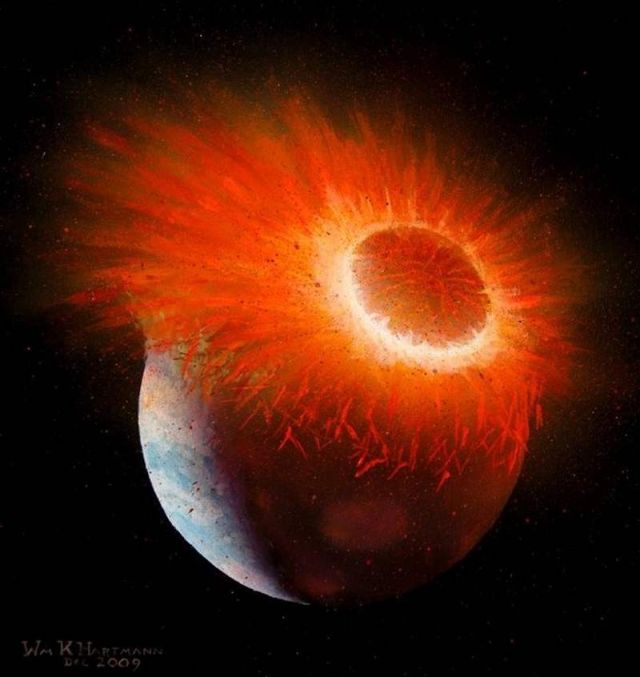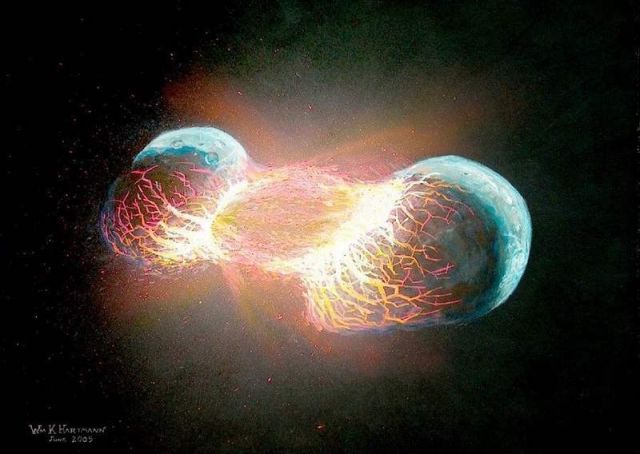A head-on violent collision between the early Earth and a “planetary embryo” called Theia, formed the Moon approximately 100 million years after the Earth formed.
Above: Based on computer models, scientist William K. Hartmann painted this rendering of planetary embryo Theia moving past proto-Earth about one hour after the initial collision, before falling back into it. Credit William K. Hartmann
Scientists had already known about this high-speed crash, which occurred almost 4.5 billion years ago, but many thought the Earth collided with Theia (pronounced THAY-eh) at an angle of 45 degrees or more — a powerful side-swipe (simulated in this video).
https://www.youtube.com/watch?v=Fwl_JBQtH9o
New evidence by UCLA geochemists and colleagues, reported Jan. 29 in the journal Science substantially strengthens the case for a head-on assault.
The researchers analyzed seven rocks brought to the Earth from the moon by the Apollo 12, 15 and 17 missions, as well as six volcanic rocks from the Earth’s mantle — five from Hawaii and one from Arizona.
The key to reconstructing the giant impact was a chemical signature revealed in the rocks’ oxygen atoms. (Oxygen makes up 90 percent of rocks’ volume and 50 percent of their weight.) More than 99.9 percent of Earth’s oxygen is O-16, so called because each atom contains eight protons and eight neutrons. But there also are small quantities of heavier oxygen isotopes: O-17, which have one extra neutron, and O-18, which have two extra neutrons. Earth, Mars and other planetary bodies in our solar system each has a unique ratio of O-17 to O-16 — each one a distinctive “fingerprint.”
In 2014, a team of German scientists reported in Science that the moon also has its own unique ratio of oxygen isotopes, different from Earth’s. The new research finds that is not the case.
The extremely similar chemical composition of rocks on the Earth and moon helped scientists determine that a head-on collision, not a glancing blow, took place between Earth and Theia. Credit William K. Hartmann
Edward Young, lead author of the new study and a UCLA professor of geochemistry and cosmochemistry, said:
“We don’t see any difference between the Earth’s and the moon’s oxygen isotopes; they’re indistinguishable.”
source UCLA







Do it now